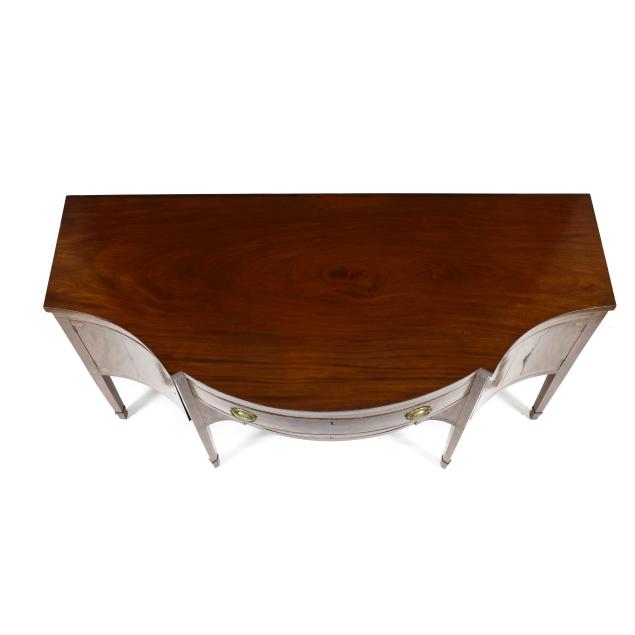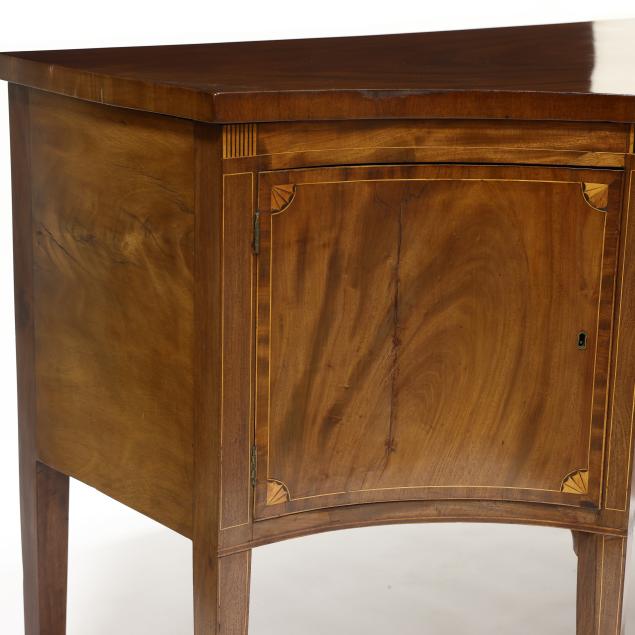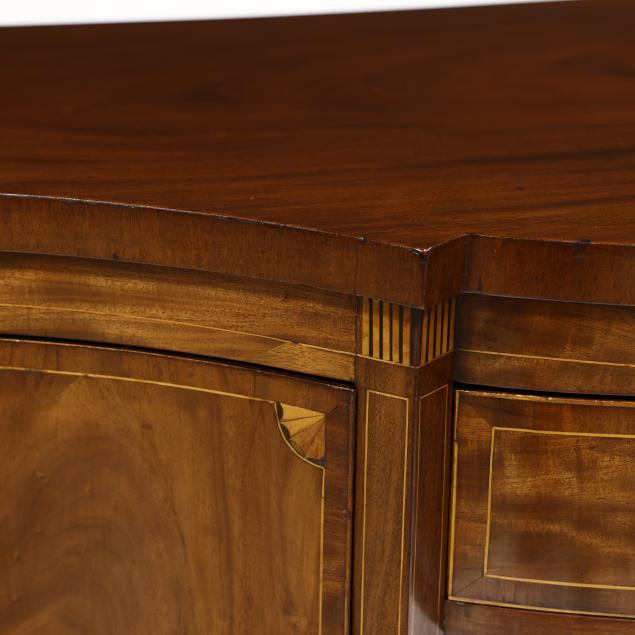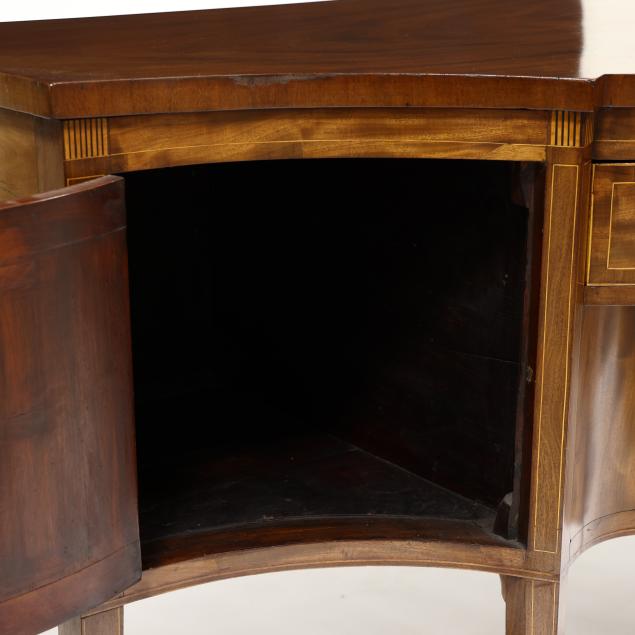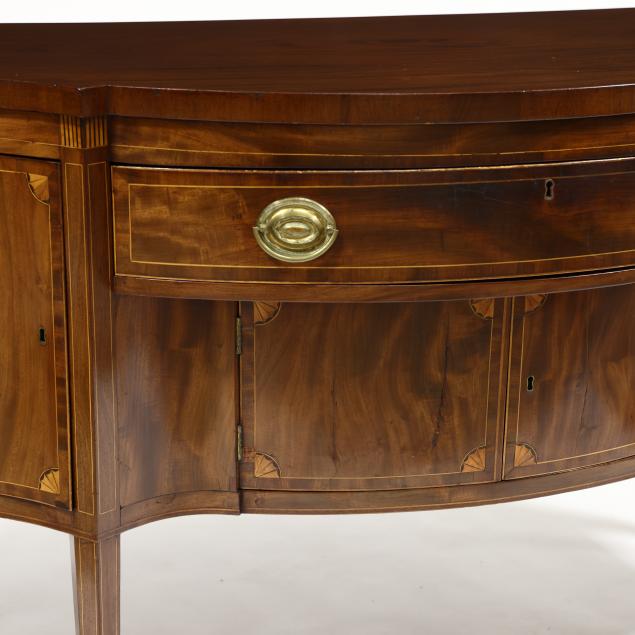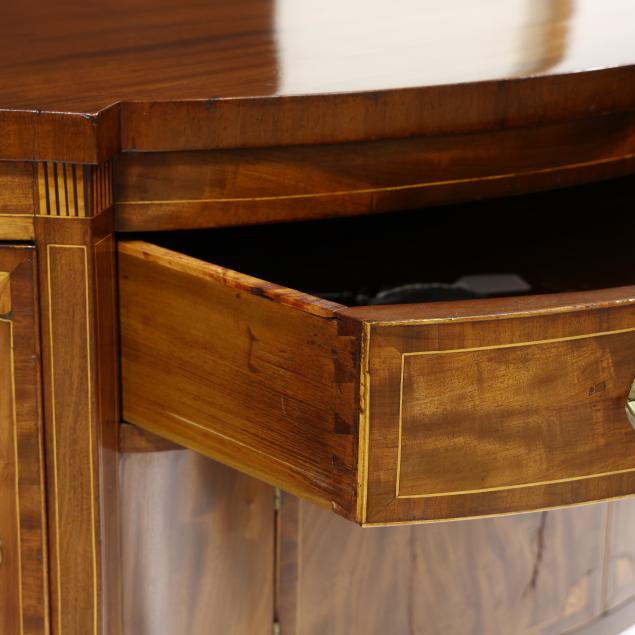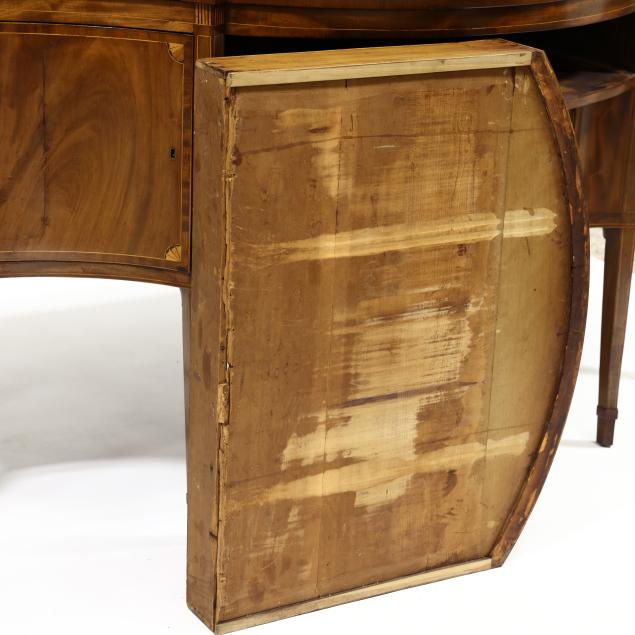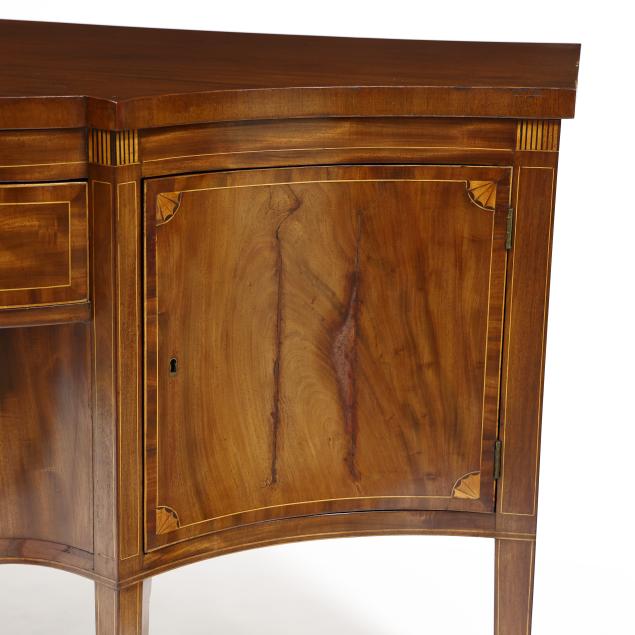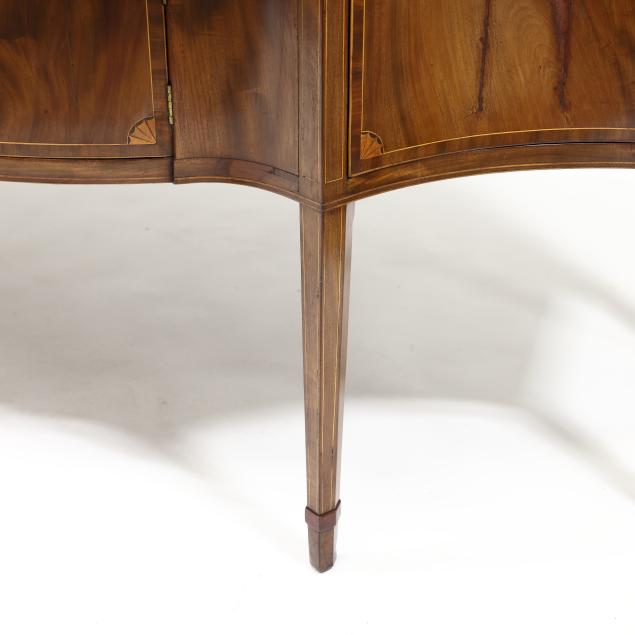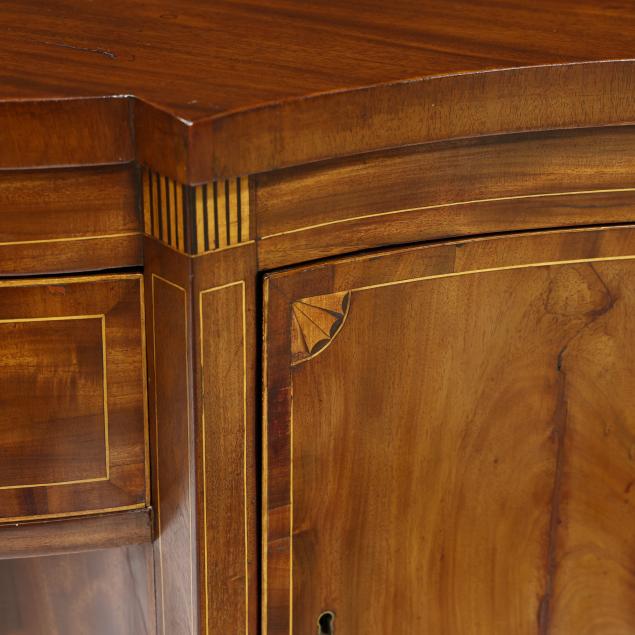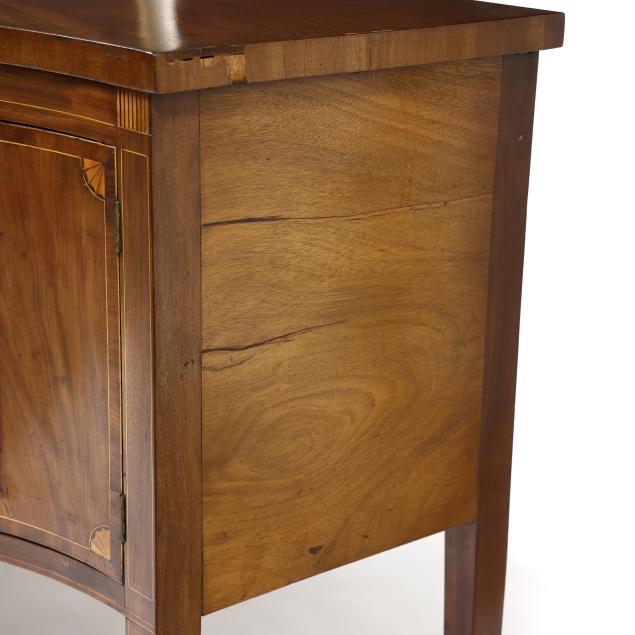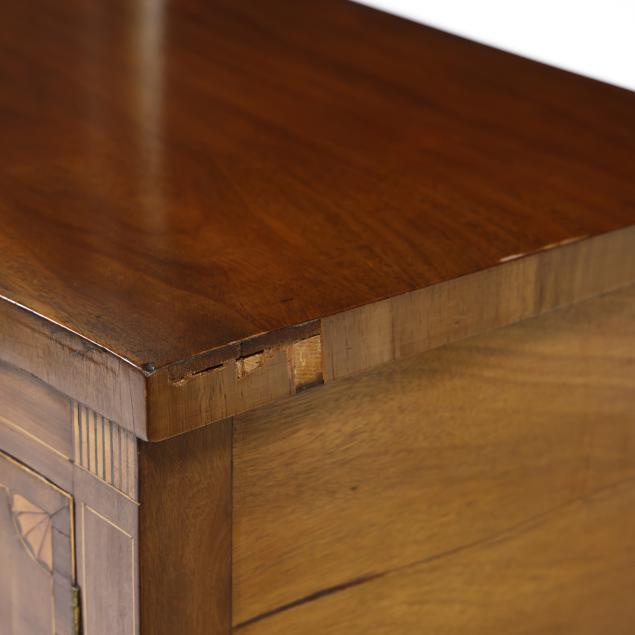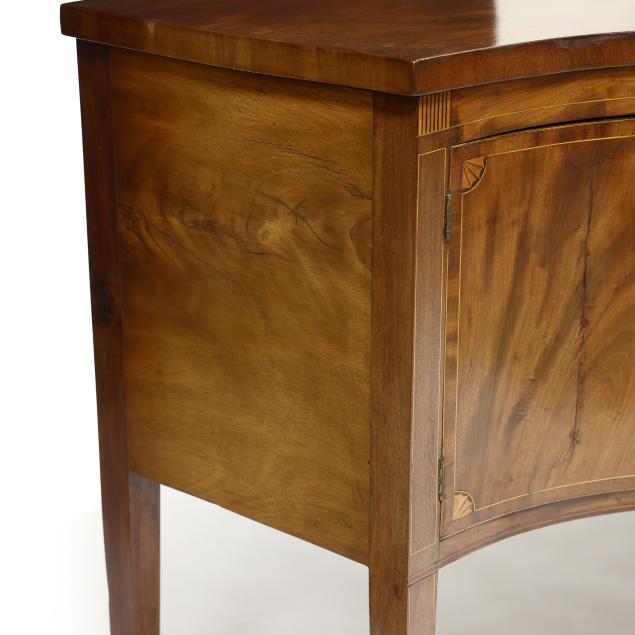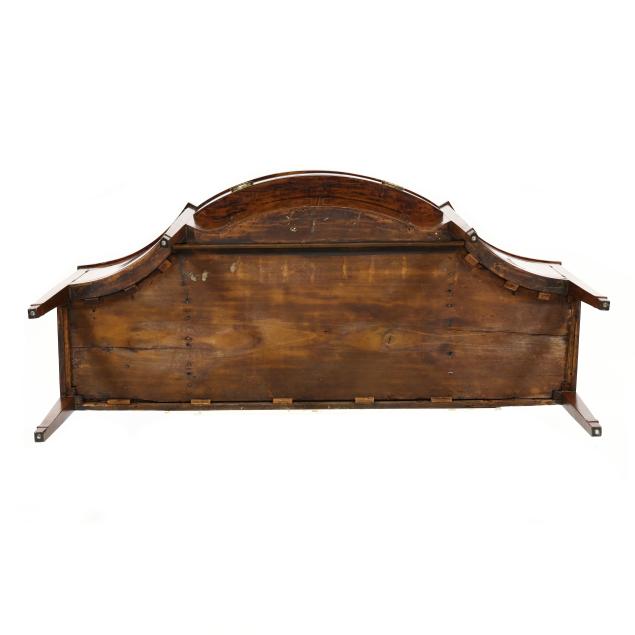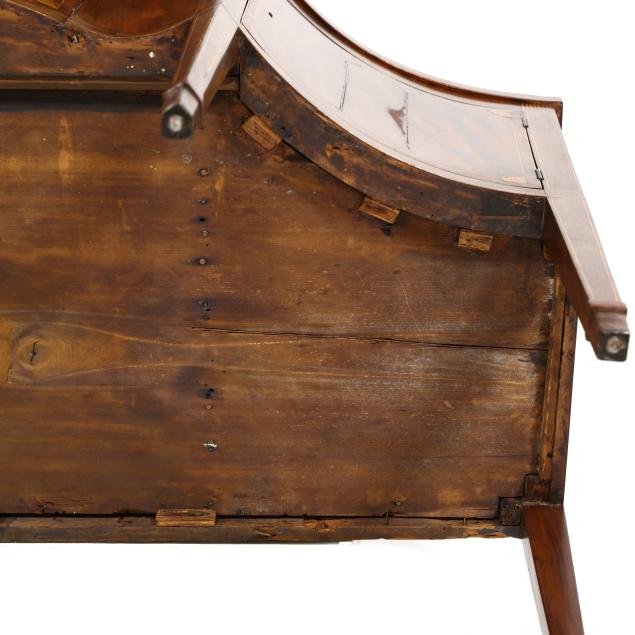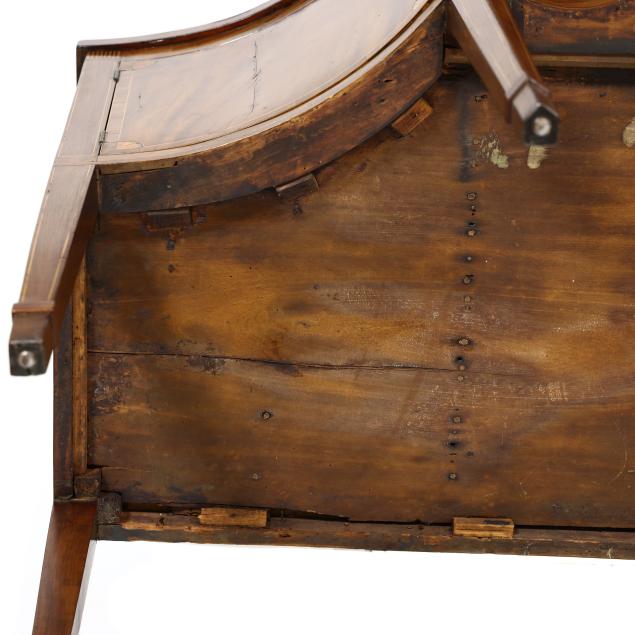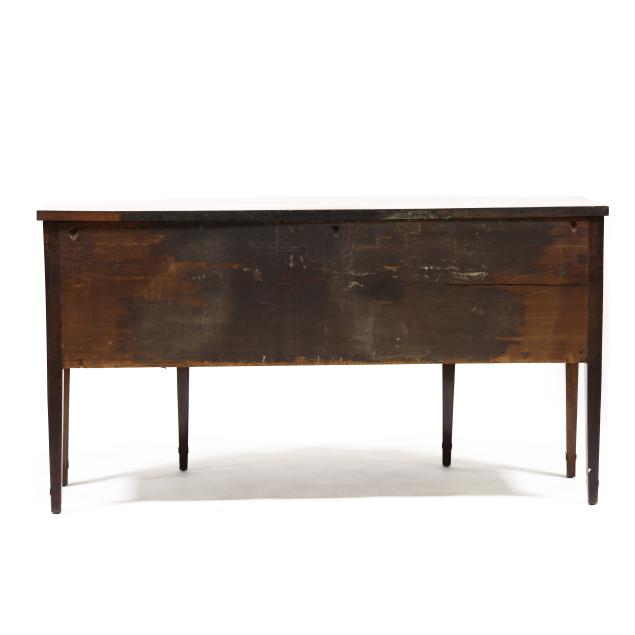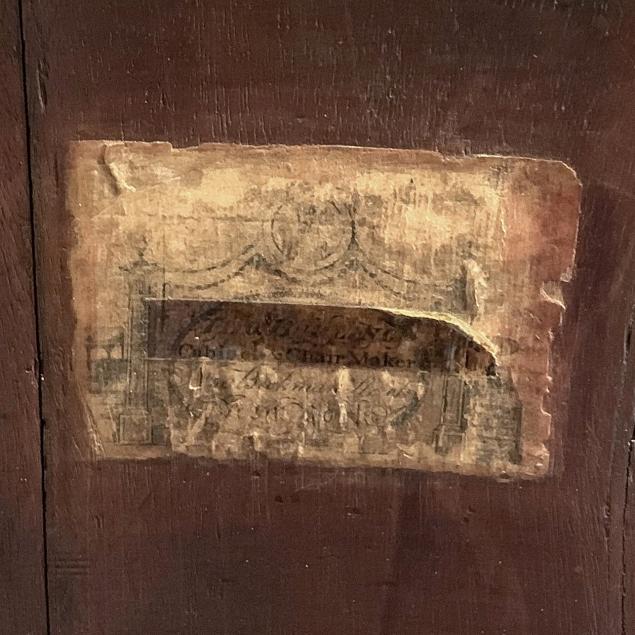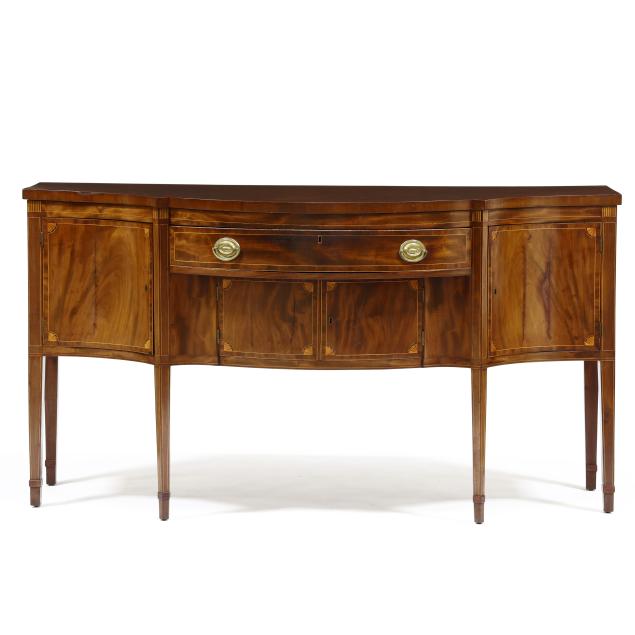
Lot 6043
Fine New York Federal Inlaid Mahogany Sideboard, Thomas Burling (1746-1831)
Explore more items like this one.
Visit our Furniture Department Furniture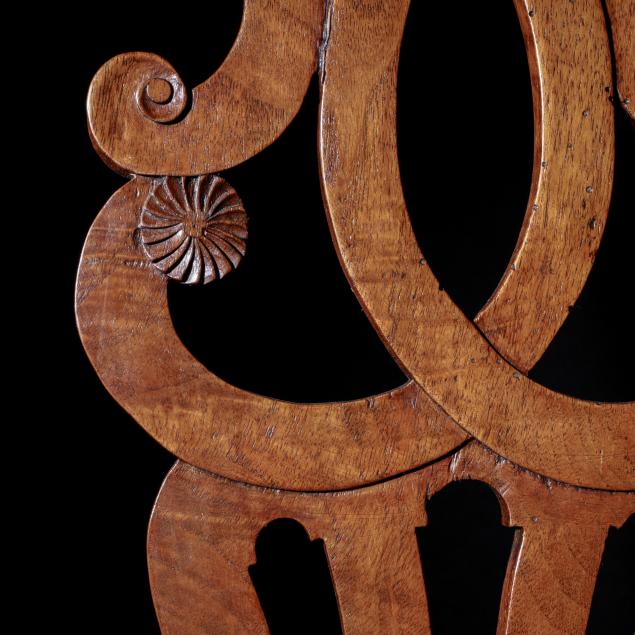
Lot Details & Additional Photographs
38.75 x 72 x 32 in.
A rare labeled example.
Thomas Burling was a distinguished cabinetmaker in 18th-century New York City, renowned for his craftsmanship and contributions to early American furniture design. He apprenticed under Samuel Prince and later operated his own workshop, the "Sign of the Chair," on Beekman Street. Burling's expertise attracted prominent clients, including President George Washington, who commissioned him to furnish the executive residence on Cherry Street in 1789. Notably, Burling crafted an "uncommon chair" for Washington, featuring an innovative swivel mechanism, which remains part of the Mount Vernon collection. Thomas Jefferson was also among Burling’s patrons, commissioning furniture for his rental house in New York and for Monticello in Virginia.
Beyond his professional achievements, Burling was deeply rooted in the Quaker community, a group known for its early and vocal opposition to slavery. He was a descendant of William Burling, an early anti-slavery advocate in Flushing, New York. Thomas Burling was also a member of the New-York Society for Promoting the Manumission of Slaves. Commonly known as the New-York Manumission Society, this society was established to publicly promote the abolition of slavery and manumission of enslaved people in New York State.
Top rear right edge with later cut/patch; some veneer chips and patches; later pulls with plug holes; later drawer guides; all four doors with vertical shrinkage cracks; shrinkage cracks and sun fading to case sides.
